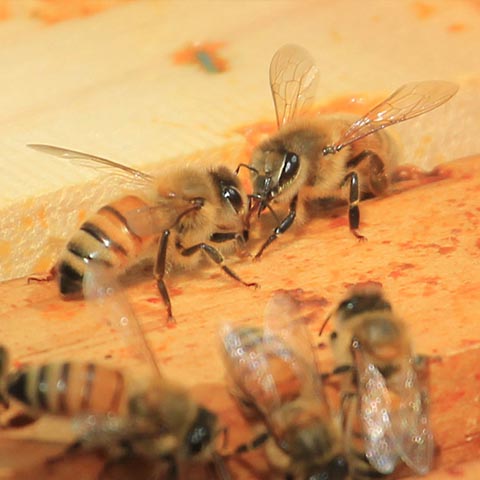Strange adaptation ensures bee, wasp survival
January 5, 2021
Posted by Lake Erie Nature and Science Center

Where are all the good men? For some species of bees and wasps in Ohio, the answer is “there aren’t any.”
Male bumblebees, honeybees, yellow jackets and other wasps die off before winter, leaving the females with the responsibility of preserving the species and propagating the world with bees and wasps once again in the spring.
You may be wondering, “How does that work? Don’t you need the DNA from both males and females of a species in order to procreate?”
Yes, a variety of genetic information is required, both for reproduction and for biodiversity, which provides a wider variation of genes within a species to increase its chance at survival.
So, how have these species managed to survive if all of their males die before winter? Well, when bees and wasps mate, instead of fertilizing and laying their eggs right away, the females will actually store the sperm in their bodies for later use. In fact, females can store enough sperm to last through the entirety of the next summer, with the ability to choose whether each egg is fertilized (female) or unfertilized (male).
In honeybees, the queen bee will mate with about 10 different males, storing enough sperm for use over the next six years (if she lives that long). Queen bees can lay up to 1,500 eggs each day from March through October — that’s a lot of genetic material!
Other insects do not have the benefit of spending winter months in a warm, active colony like honeybees. Queen bumblebees, yellow jackets and other wasps must build new colonies with many daughters to help feed and care for their larvae.
However, their colonies are much smaller than the honeybee and lack the necessities of food and warmth in order to survive winter. Mated females must find a warm, dry place — under loose tree bark, in a pile of leaves or even underground – from which to emerge again in the spring and become egg-laying queens.
Are you interested in learning more about the lives of honeybees and native Ohio pollinators? This year, Lake Erie Nature & Science Center invites you to take part in its new Pollinator Series, which will feature a different educational topic each month.
Whether you are interested in the symbiotic relationship between native plants and their pollinators, or you want to take a closer look at the inside of a beehive, this series has you covered.
Learn more and register for January’s virtual Pollinator Series program, Introduction to Backyard Beekeeping. The Center’s Pollinator Series is recommended for preteens through adults. Each monthly program costs $8 per person.

